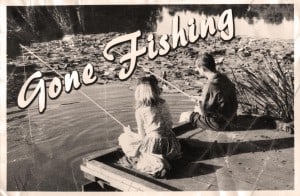 A couple walks up to a restaurant with their two small children. The couple looks weary, as couples with small children sometimes do. The kids are excited because it’s the place with lots of pie. The restaurant is so good, it’s crowded. The man asks, with a grimace, “Are you sure you want to wait in this crazy line?” The woman’s shoulders slump. “Well, what do you want to do?” with a giant sigh. The children are jumping and wiggling with excitement. The couple looks angry, defeated.
A couple walks up to a restaurant with their two small children. The couple looks weary, as couples with small children sometimes do. The kids are excited because it’s the place with lots of pie. The restaurant is so good, it’s crowded. The man asks, with a grimace, “Are you sure you want to wait in this crazy line?” The woman’s shoulders slump. “Well, what do you want to do?” with a giant sigh. The children are jumping and wiggling with excitement. The couple looks angry, defeated.
Now in our 3rd decade of marriage, my husband and I watched with empathy. We’ve been there, but have learned some things. Our conversation might go…
“Wow. The line is long.” “Yeah, but the kids are excited.” “I’m so hungry.” “I know. Me too. Let’s see if it moves fast. It’s easier than getting the kids back in the car and finding a new place.” “Yeah. That sounds like a nightmare.”
In the former scenario, people aren’t really saying anything directly. They are asking questions. When you ask questions, you get to stay safely out of the situation by not really stating an opinion, but you’re not really taking responsibility for what you think and feel, so you don’t get to feel understood or connected.
Also, because no one is really saying anything, there necessarily has to be some kind of mind-reading. She may be inferring all sorts of negative things from his question like, ‘He doesn’t want to eat here,’ ‘He doesn’t really get the kids’, ‘He thinks this is my fault,’ ‘He thinks I’m a shrew.’ And, he may be inferring all sorts of negative things from her question, like, ‘She blames me for this,’ ‘She won’t be happy if I don’t do what she wants,’ ‘She thinks I’m a bad dad,’ ‘She doesn’t care about me.’ Since no one really said anything, it’s a dangerous free-for-all.

“Life is a process–
just one thing after another.
When you lose it,
just start again.”
― Richard Carlson,
Don’t Sweat the Small Stuff
In the second scenario, people are making statements They are saying what they think and feel. Because of that, no one has to guess what’s really being said. He’s hungry, and she doesn’t want to live through tantrums. This means they can acknowledge the other person’s feelings: “I know. Me too.” “Yeah. That sounds like a nightmare.”
Now, you are getting a shared experience. The parents are in it together. It’s a total drag, but it isn’t a fight. They put the blame on the situation, “Let’s see if the line goes fast,” rather than on what the other person decides to do.
In the former situation, the parents might have stayed quietly resentful of each other for a while and the kids might have begun to feel it. That’s not the end of the world, but the day used to be about pie for them.
In the second situation, the parents are modeling how to get through something that’s kind of a drag, and in this moment now, they can still hold hands.



